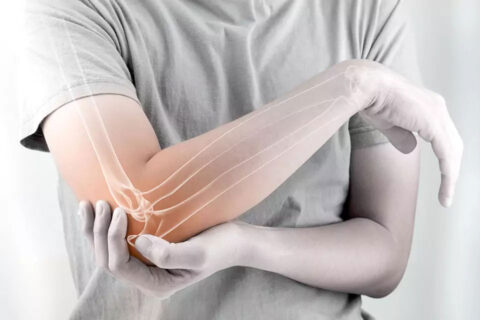A bone fracture is a break in the continuity of a bone. A significant percentage of bone fractures occur because of high force impact or stress. However, a fracture may also be the result of some medical conditions that weaken the bones. These include osteoporosis and some types of cancer. The medical term for these is a pathological fracture. A bone fracture could be full or partial break in the continuity of bone tissue in any bone in the body.
Fractures and acute injury treatment
Jumeirah Street - Umm Suqeim - Dubai - UAE
Please remember we care about your privacy.
- CONTACT US
In Case of Emergency Call 971-50-6451300
Or chat with us via WhatsApp by clicking on the Button below
There are several different ways in which a bone can fracture. For example, a closed fracture is a break to the bone that does not damage surrounding tissue or tear through the skin. By contrast, a compound fracture is one that damages surrounding tissue and penetrates the skin. Compound fractures are generally more serious than simple fractures due to the risk of infection.
Symptoms
Symptoms of a fracture vary depending on its location, a person’s age and general health, and the severity of the injury.
However, people with a bone fracture will typically experience some of the following:
- pain
- swelling
- bruising
- discolored skin around the affected area
- protrusion of the affected area at an unusual angle
- inability to put weight on the injured area
- inability to move the affected area
- a grating sensation in the affected bone or joint
- bleeding if it is an open fracture
In more severe cases, a person may experience:
- dizziness
- faintness or lightheadedness
- nausea
Causes
Healthy bones are extremely resilient and can withstand surprisingly powerful impacts. However, under enough force, they may crack or break.
the leading causes of bone fractures are physical trauma, overuse, and health conditions that weaken the bones, such as osteoporosis, Other factors can also increase an individual’s risk of sustaining fractures.
A person’s bones will typically weaken with age, which increases the risk of them breaking and the likelihood of their developing a condition that weakens the bones is also greater.
Diagnosis and treatment
A doctor will inquire about the circumstances that led to a person’s fracture. They will then carry out a physical examination to reach a diagnosis.
Often, An X-ray will be ordered, and in some cases, an MRI or CT scan, to fully assess the fracture.
Bone healing is a natural process Trusted Source that, in most cases, will occur naturally. Therefore, treatment typically focuses on providing the injured bone with the best circumstances for healing, and ensuring optimal future function.
For the natural healing process to begin, a doctor will reduce the fracture. This involves lining up the ends of the broken bones. In smaller fractures, a doctor can do this by manipulating the affected area externally. However, in some instances, this may require surgery.
Once a medical professional has aligned the fracture, they will ensure it stays in place. Methods of doing so include Trusted Source:
- casts or braces
- metal plates and screws
- intramedullary nails, or rods, placed in bone cavities
- external fixings
Fractures can take several weeks to several months to heal, depending on their severity. The duration is contingent on which bone has become affected and whether there are any complications, such as a blood supply problem or an infection.
Other factors that can affect bone healing include Trusted Source:
- smoking
- excessive alcohol consumption
- a high body mass index
- nonsteroidal anti-inflammatory drug use
- a person’s age
After the bone has healed, it may be necessary to restore muscle strength and mobility to the affected area through physical therapy.
If the fracture occurs near or through a joint, there is a risk of permanent stiffness or arthritis. If this happens, a person may not be able to bend that joint as well as before the injury.
Please call 971-50-6451300
Or contact us via email form below
© 2025 Dr Issam Mardini All rights reserved
Powered By MUDEEF



